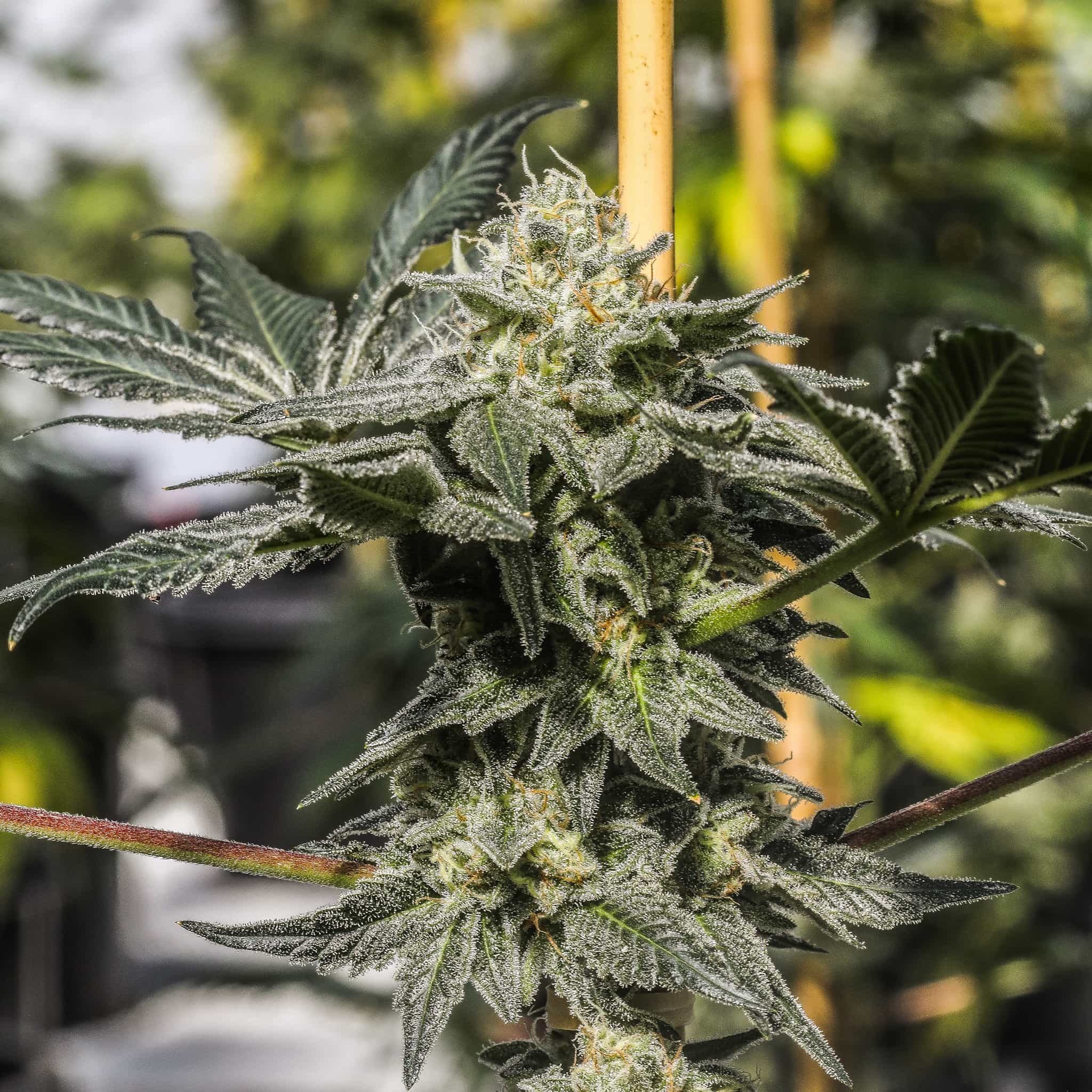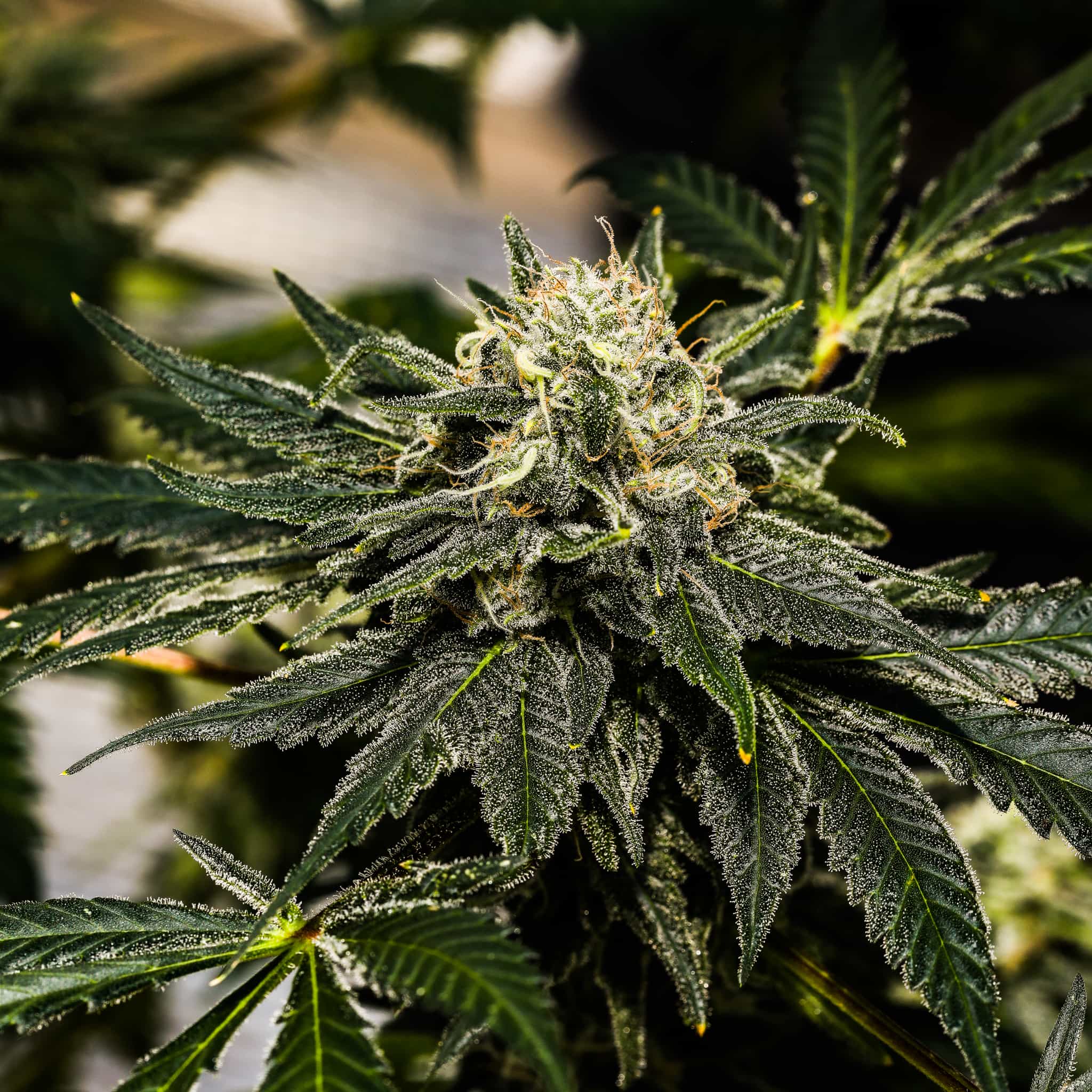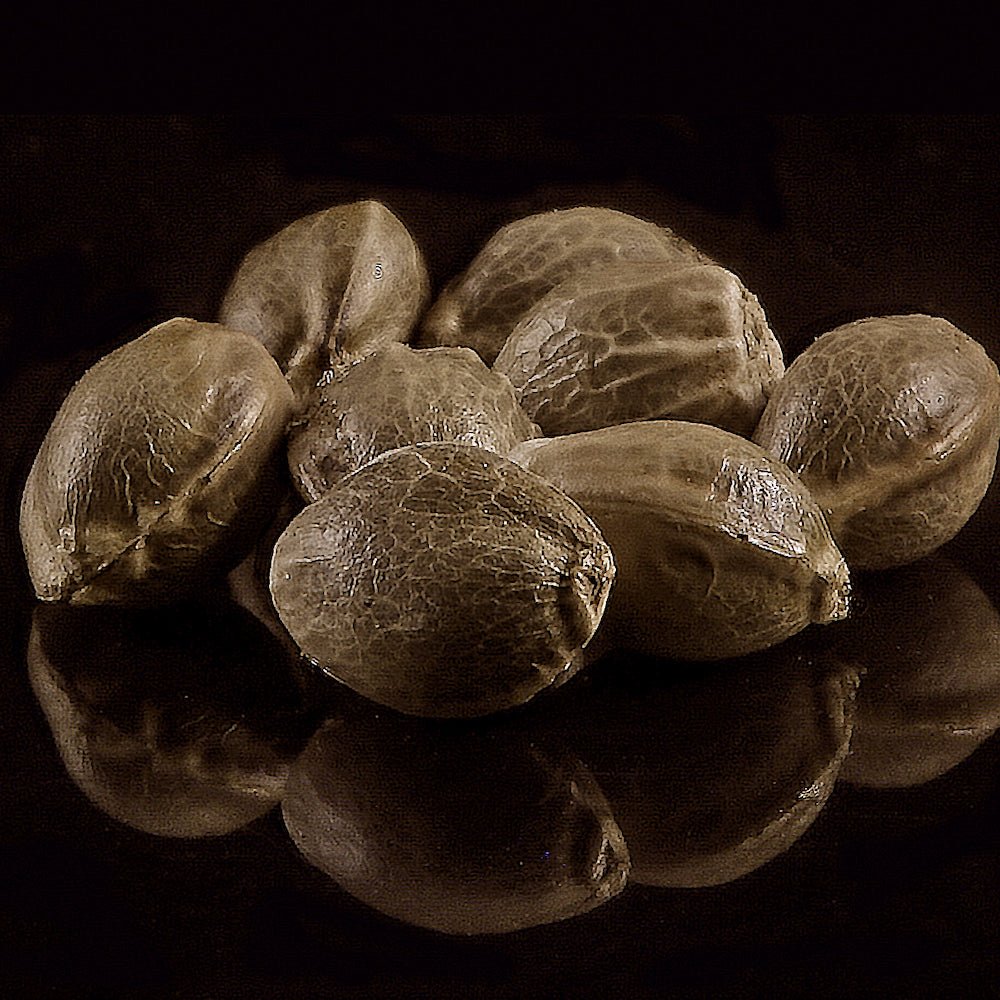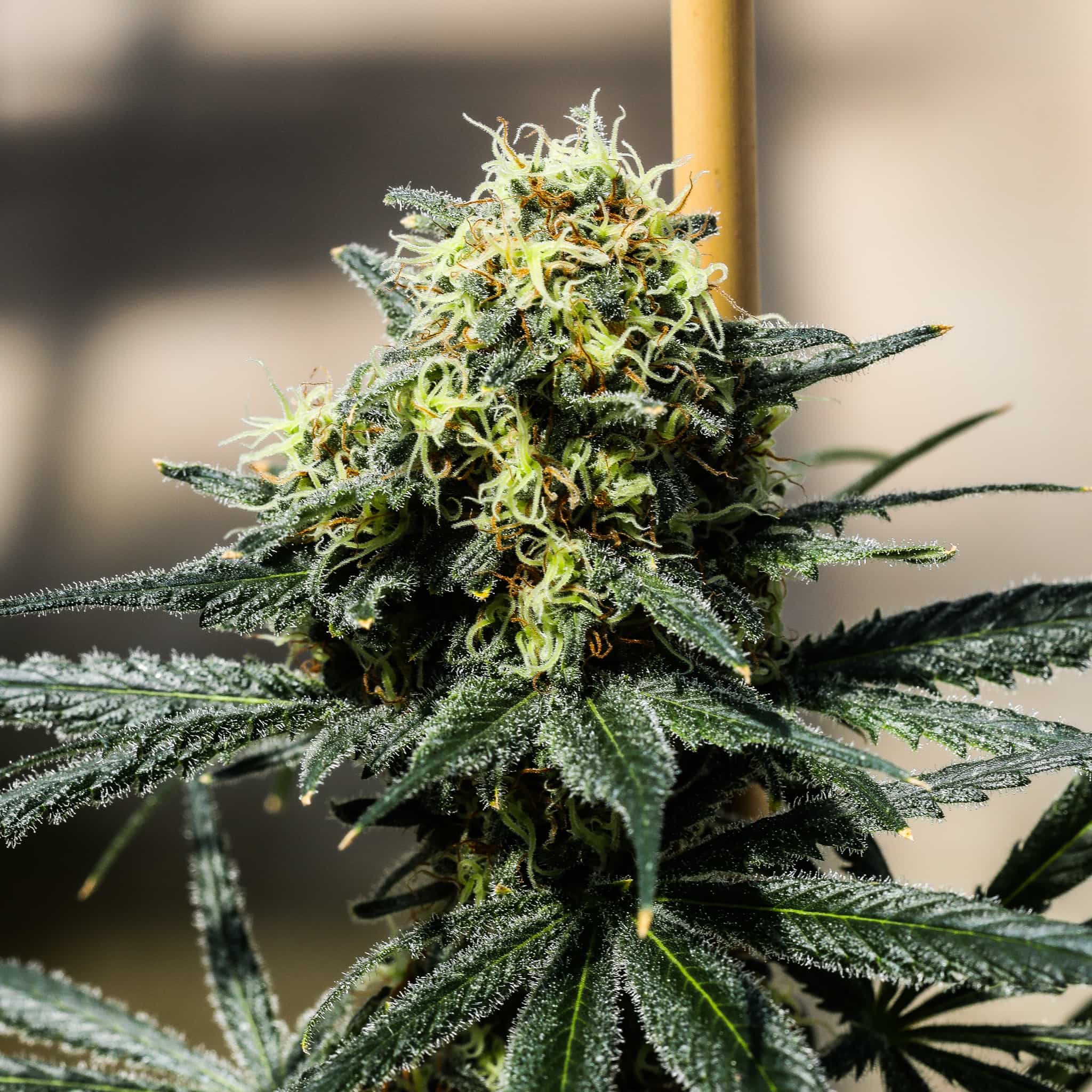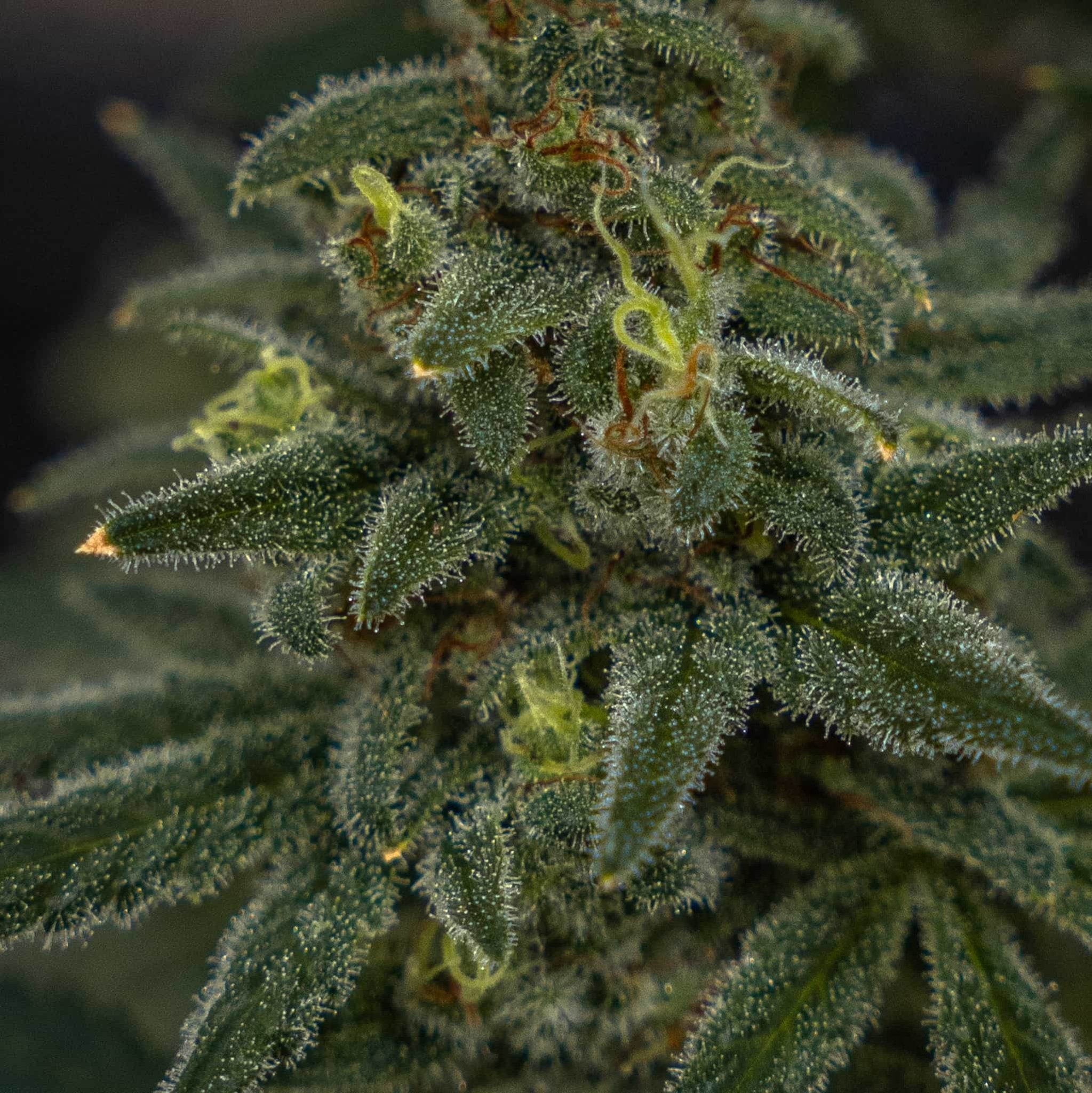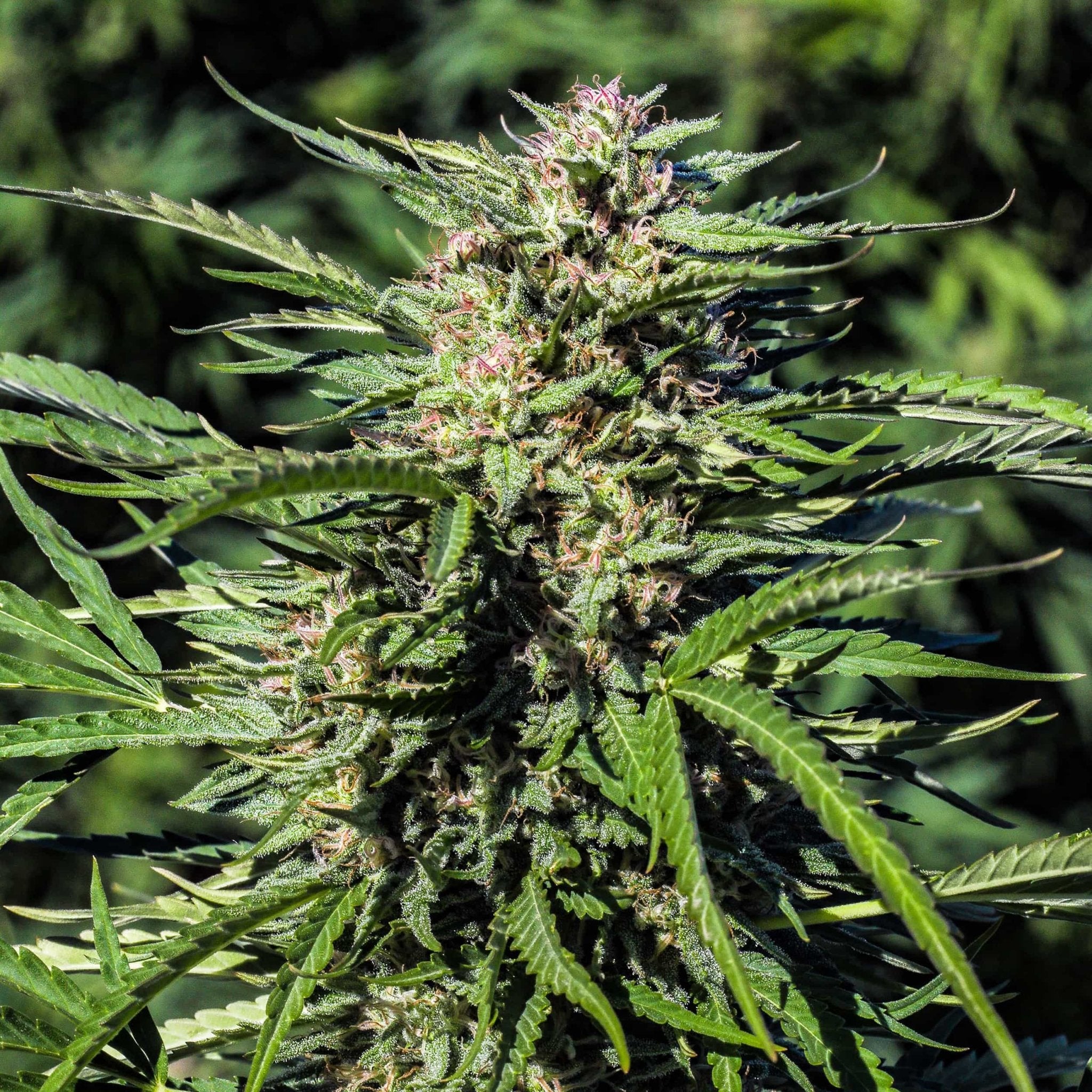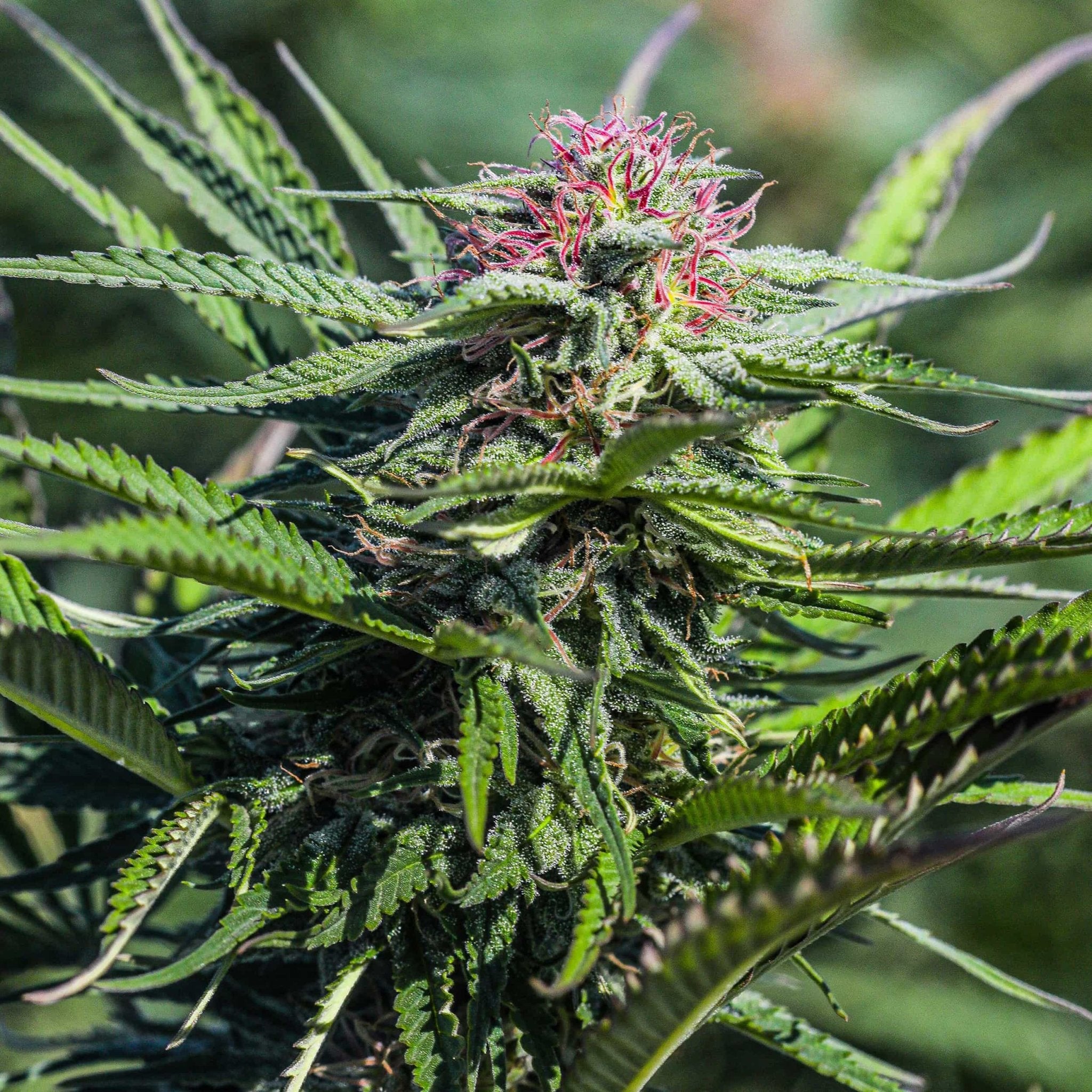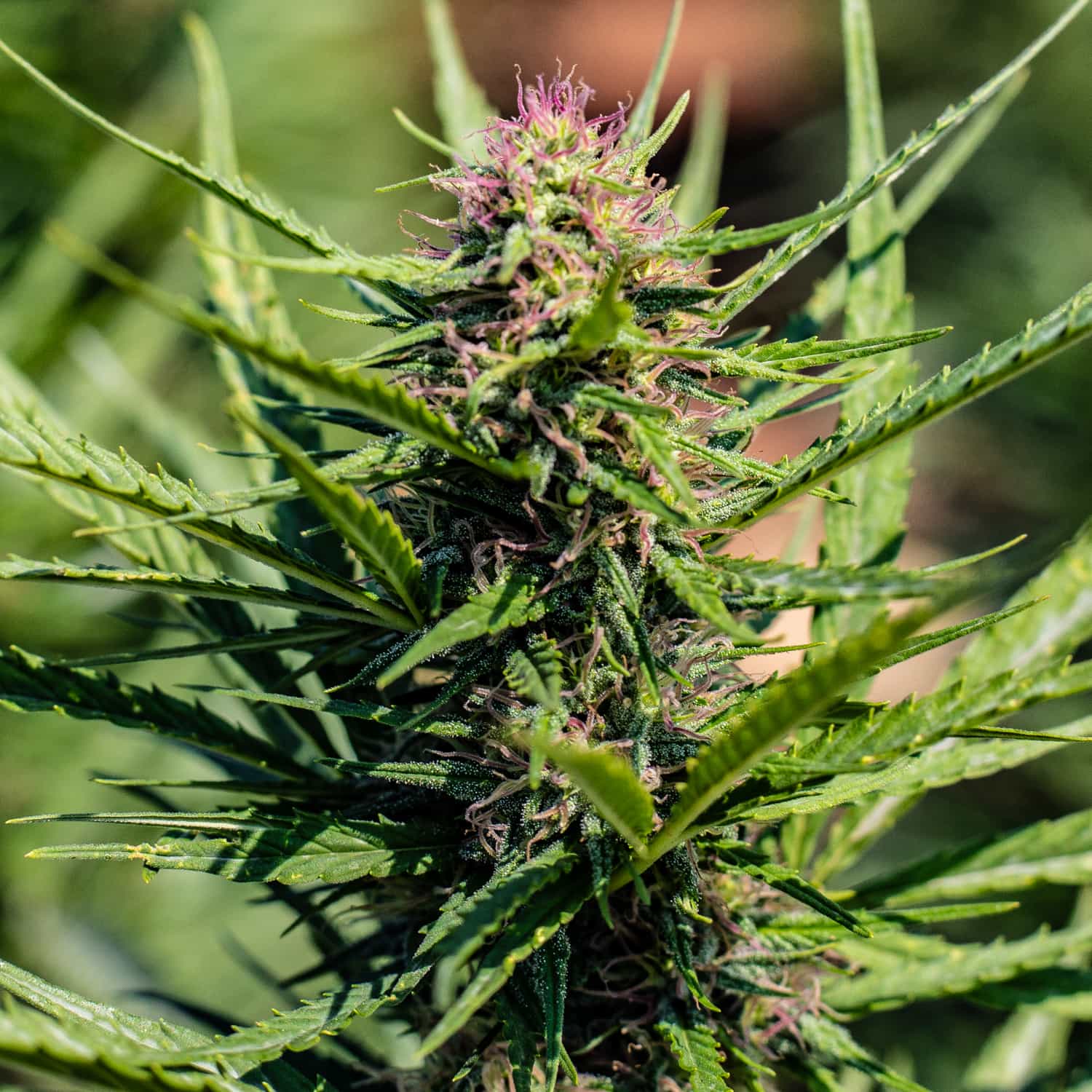PRVNÍ V OBLASTI KONOPÍ
Kouzlo triploidů
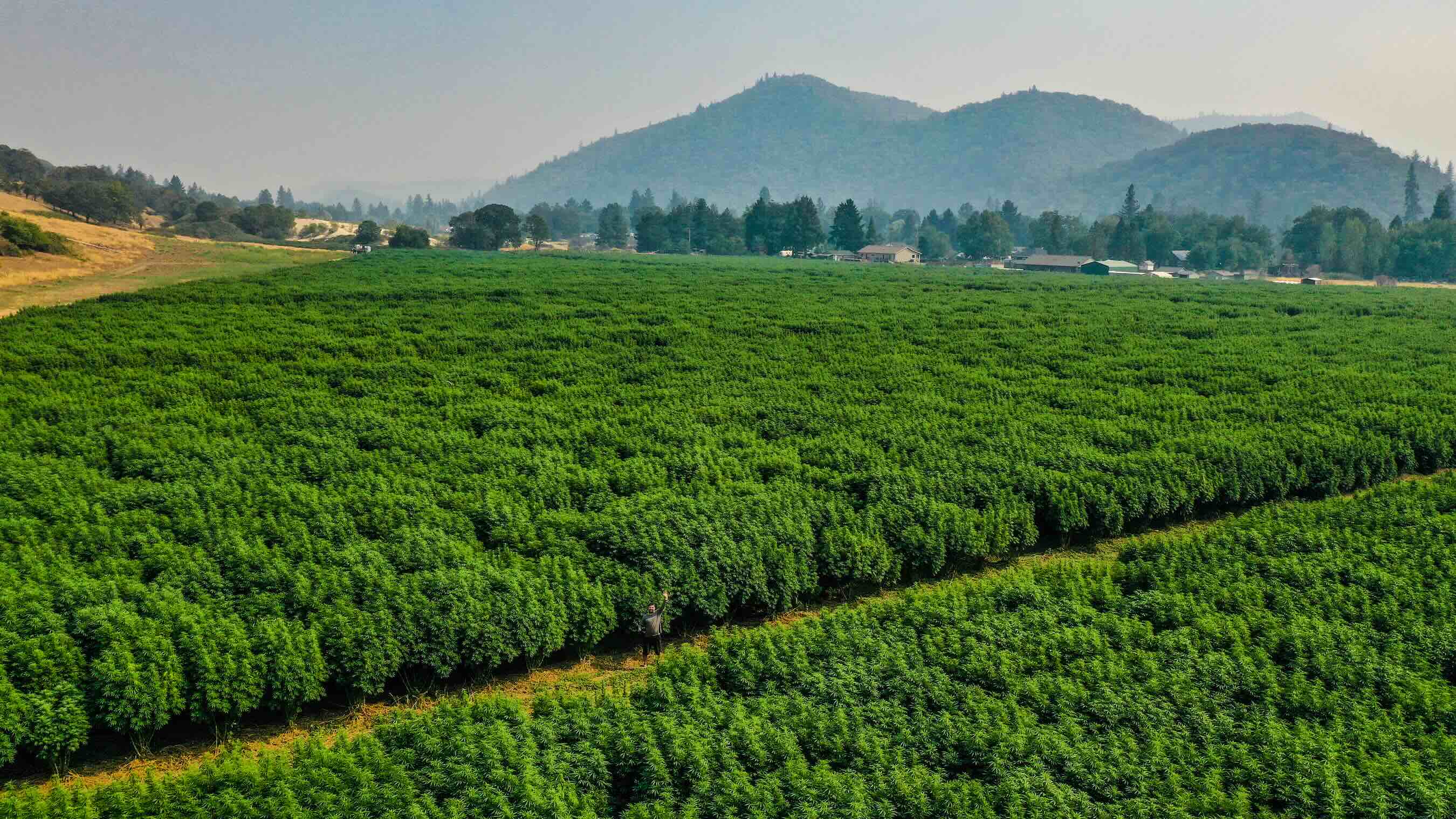
V roce 2020 naši šlechtitelé jako první na světě vyvinuli první komerční triploidní semena konopí.
Tento průlom navazuje na dlouhý seznam plodin, které využívají tento agronomický pokrok – od bezsemenných melounů přes hrozny a citrusy až po chmel. Pokud jste kdy jedli banán, jedli jste triploid. Triploidi prostě vytvářejí větší a lepší plody a květy – a bez všech semen.
Naše nabídka zahrnuje širokou škálu triploidních semen konopí bohatých na THC, THCV, CBD, CBDV a CBG, které pěstitelům nabízejí převratné výhody – a my věříme, že polyploidie je budoucností konopí.
Nevěříte, že jsme to udělali jako první? Podívejte se na naši publikaci v Národní lékařské knihovně, kterou naši pěstitelé napsali dávno předtím, než se stalo slovo konopí (cannabis) módním výrazem.
Proč je triploidní konopí lepší?
Triploidní odrůdy se nejen obtížně opylují a produkují semena, ale také vykazují výrazné zvýšení produkce, aroma a celkové estetiky. Tento obrovský skok vpřed pro producenty konopí odemyká potenciály, které dříve nebyly možné – a zároveň výrazně snižuje riziko výskytu semen ve sklizni.
Trojnásobné chromozomální sety (triploidy) nerady produkují semena.
Triploidy jsou přírodním, byť vzácným jevem. Jsou to rostliny s lichým počtem chromozomových párů a po opylení nevytvářejí životaschopné potomstvo.
Pro pěstitele v oblastech s výskytem plevelů, zapomenutých polí nebo vláknitých plodin mohou být triploidy záchranou sezóny. Pyl, který se uvolní z jakéhokoli občasného oboupohlavního květu na triploidu, je také téměř nepoužitelný – pro pěstitele v interiéru, kteří by ho mohli přehlédnout – šetří místo. Ačkoli rostliny mohou při dostatečném opylení produkovat nějaká semena – ale jen v nepatrné části toho, co by produkovala tradiční diploidní rostlina.
Od roku 2021 Cornellova univerzita testuje naše triploidní rostliny vysazené mezi obilniny a vlákninové plodiny. Rostliny jsou v podstatě pokryty pylu v takovém množství, jaké si většina pěstitelů nedokáže představit. I když rostliny produkují určité množství semen, obsah kanabinoidů zůstává vysoký a procento semen je velmi nízké.
Podívejte se na data zde .
Triploidní semena konopí vytvářejí větší rostliny.
V testech naše triploidní odrůdy konopí produkovaly o 30–100 % více květů než jejich diploidní protějšky. Jedná se o váhu květů, bez ohledu na stonky a listí.
Největší zlepšení bylo zaznamenáno u samonakvétajících odrůd, s průměrným výnosem 400 gramů na rostlinu – ve srovnání s tradičními diploidními odrůdami, které obvykle dosahují 100–150 gramů na rostlinu. U našich odrůd s fotoperiodickým cyklem pozorujeme snadno dosažitelný 30% nárůst produkce květů.
Kvalita a kvantita: Konopí Triplopid je lepší.
My jsme byli nejvíce ohromeni kvalitou a množstvím květin, které produkují. Triploidy jsou skvělé jak uvnitř, tak venku!
Je nemožné přehlédnout, jak mnohem více kvetou triploidy, s pryskyřicí, která se rozprostírá dále dolů po cukerných listech než u tradičních diploidů. Při srovnání vedle sebe je na rostlinách vidět rozdíl. Triploidy doslova KAPOU pryskyřicí.
Studie prokázaly 50% nárůst aromatických sloučenin u triploidního chmele – u konopí je situace pravděpodobně podobná. Vědci si uvědomují, že terpeny tvoří pouze asi 50 % vůní v konopí. S tímto vědomím je extrémně obtížné aroma kvantifikovat – ale rozdíl mezi diploidy a triploidy můžete ucítit a ochutnat.
Jsme nesmírně hrdí na naši triploidní řadu THC, THCV, CBD, CBDV a CBG – ale mnoho z nich je v omezeném množství.
Proč jsou semena triploidních odrůd tak drahá?
Ačkoli tato semena mohou být drahá, jsou také nesmírně obtížná na výrobu – a trvalo roky výzkumu a vývoje, než se podařilo tento proces zdokonalit.
Nejenže trávíme čas výběrem rodičů pro hybridní linie F1 – pak nastupuje věda. Naše vybrané mateřské rostliny podstupují ošetření, aby se proměnily v tetraploidy. Rostliny jsou ošetřovány a testovány po dobu 2 měsíců, aby se zajistilo, že jsou tetraploidní. Během tohoto procesu ztratíme asi 50 % rostlin a některé rostliny se vrátí zpět k diploidům a je třeba je zlikvidovat. Přeměněné rostliny, které přežijí, se ošetřují, aby se zotavily, naklonují se, znovu se testují a nakonec se stanou matkami.
Poté se rostliny přesunou do našich skleníků, kde je opylíme pomocí naší druhé příbuzenské linie, diploidní. Ve většině našich pokusů dosahujeme přibližně 5–30 % produkce semen, jakou bychom dosáhli při normálním křížení. Několik malých pokusů nám ale nebylo schopno vyprodukovat životaschopná semena.
Tak proč je to tak drahé? Léta výzkumu a vývoje, měsíce testování, klonování, pěstování, oprašování, spousta účtů za elektřinu – a to vše jen pro 5–30 % výnosu semen, jaký bychom získali při běžném diploidním křížení.
Průkopnické úsilí v tomto procesu představovalo obrovskou finanční zátěž, která nás málem zruinovala – ale nakonec víme, že to bude stát za to. Více o našem procesu triploidního šlechtění se můžete dozvědět zde.
Přečtěte si další podrobnosti o tom, jak jsme vytvořili první triploidní semena konopí.
Dvojnásobný vs. trojnásobný
2x na levé straně vs. 3x na pravé straně
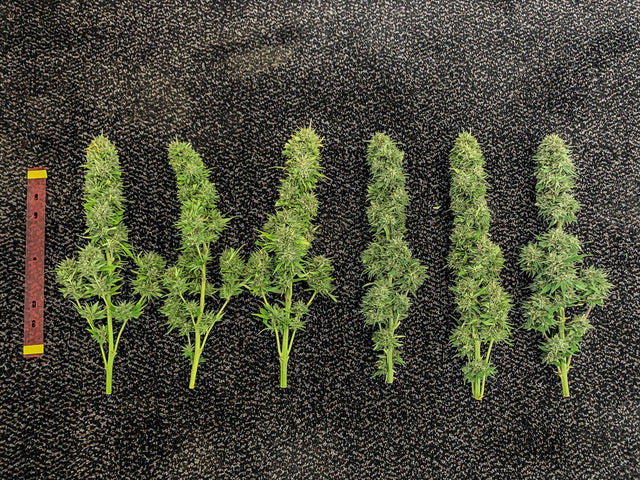
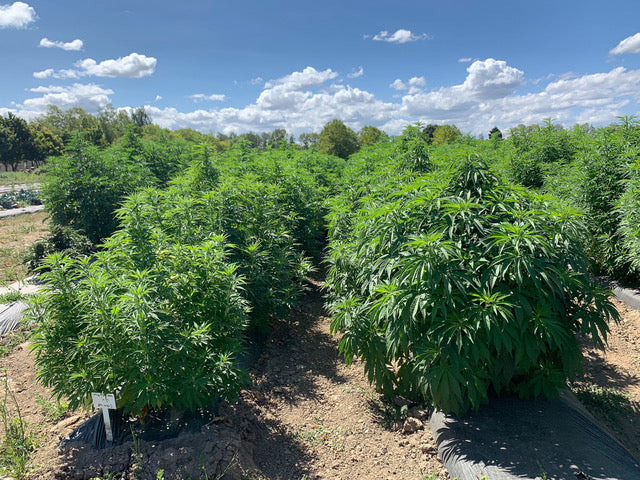
Co je tedy triploidní rostlina konopí?
Divoká konopí je téměř výhradně diploidní (2n) druh. U diploidů přijímá každá rostlina jeden sad chromozomů od každého rodiče. I když jsou vzácné, mohou se vyskytnout spontánní mutace, které vedou ke zdvojení diploidních genomů a k vzniku tetraploidních (4n) jedinců, a to i v kontrolovaných chovných populacích.
Dr. Hsuan Chen a Brendan Rojas, výzkumní šlechtitelé rostlin z Oregon CBD, navrhli sérii experimentů k ošetření diploidního tkáně konopí sloučeninami, o kterých je známo, že inhibují dělení buněk. Tento proces napodobuje události indukující tetraploidii, které se v přírodě vyskytují s velmi nízkou frekvencí, ale nyní (po mnoha experimentech) tak činí konzistentněji. Ošetřené rostliny je nutné prověřit pomocí průtokové cytometrie – zařízení, které dokáže změřit fyzickou velikost rostlinného genomu – a porovnat s jejich diploidními protějšky, aby se zjistilo, zda došlo k požadovanému zdvojení velikosti genomu. Úspěch vede k tetraploidům: rostlinám se čtyřmi sady homologních chromozomů (4n) a identickou zdvojenou verzí mateřské rostliny. Tento screeningový proces se opakuje několikrát v následujících generacích řízků, aby se zabránilo návratu do diploidního stavu.
Tetraploidní rostliny konopí popsaly dvě další výzkumné skupiny (Mansouri a Bagheri 2017 a Parsons et al. 2019) a jejich zjištění se shodují s našimi; jsou patrné zřetelné morfologické změny a zvýšená spotřeba živin, ale chemické složení (poměry a celkové množství produkovaných látek) je relativně nezměněné – i když s výrazným nárůstem aromatických sloučenin. Dosavadní důkazy naznačují, že tetraploidní rostliny nabízejí oproti diploidním rostlinám jen nepatrné, ne-li žádné zlepšení výkonu, s výjimkou výraznějších čichových vjemů.
Pro zemědělce je zásadní průlom dosažen křížením tetraploidů (4n) s diploidy (2n); výsledné semeno nese 2 kopie chromozomů od tetraploidního rodiče a 1 sadu od diploidního rodiče (3n). Tento tradiční proces šlechtění rostlin je dobře zdokumentovaný a byl použit ke zlepšení mnoha dalších plodin, zejména těch, u kterých jsou cennými agronomickými vlastnostmi bezsemenné vlastnosti, produkce esenciálních olejů a zvýšená biomasa. Díky vylepšení ploidie jsme schopni nabídnout tento revoluční pokrok u široké škály chemotypů konopí – což představuje jeden z nejvýznamnějších pokroků v historii moderního šlechtění konopí.
Co bude dál? Už se nemůžeme dočkat, až vám ukážeme tetraploidní konopí!
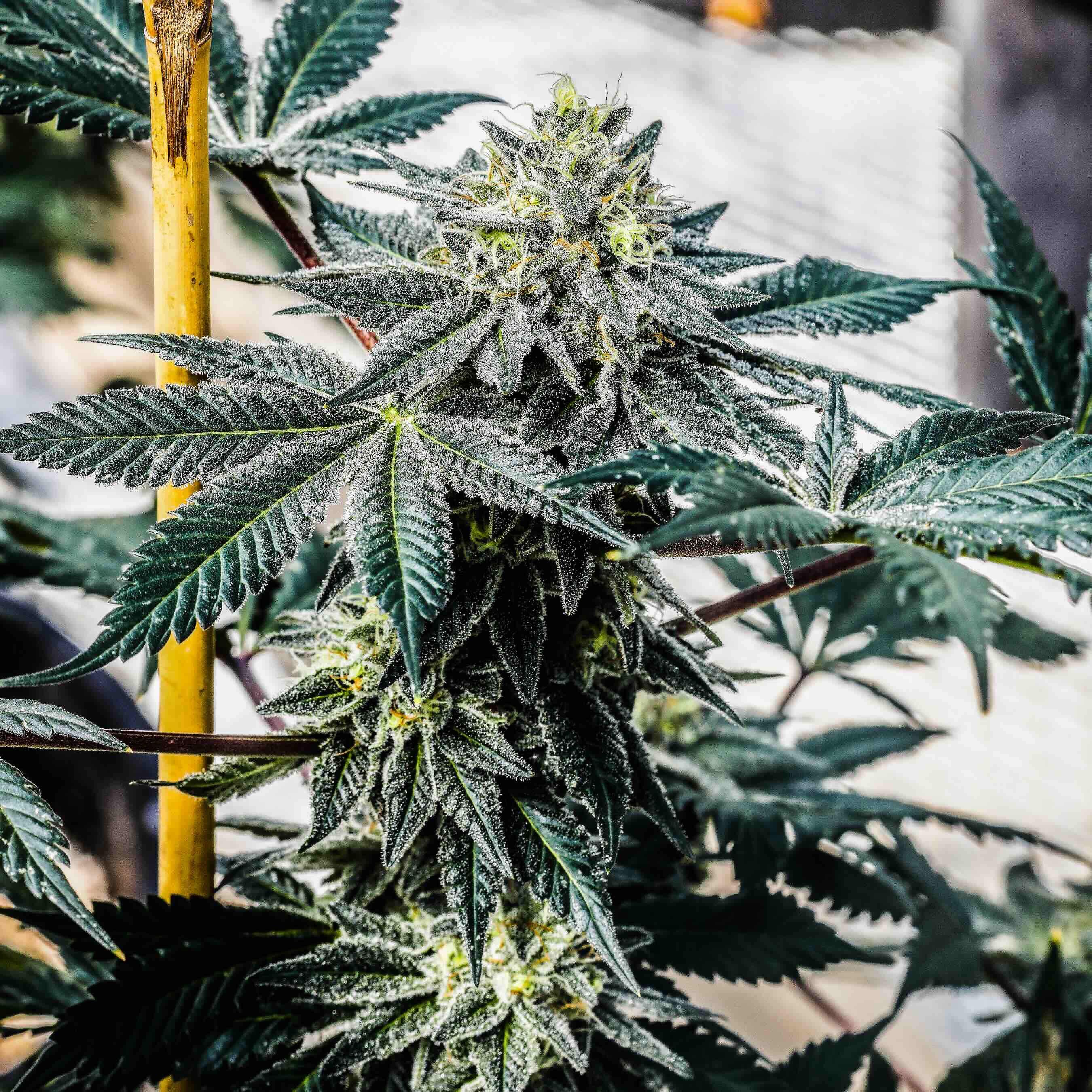
Představujeme
Triploidní konopí od Oregon CBD / GTR Seeds
První komerční triploidní odrůdy konopí vyšlechtila společnost Oregon CBD – a nyní je zpřístupnila veřejnosti prostřednictvím GTR Seeds. Tyto triploidní odrůdy konopí vykazují zvýšenou produkci, vyšší obsah pryskyřice a jsou téměř bez semen, a to i při silném opylení. Podívejte se na vědu za tímto procesem s Sethom Crawfordem.

